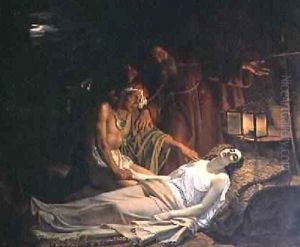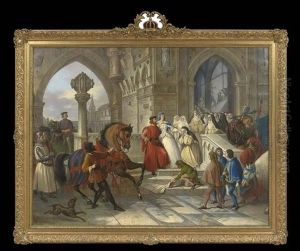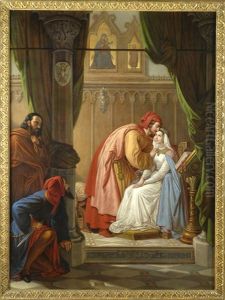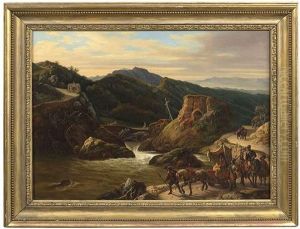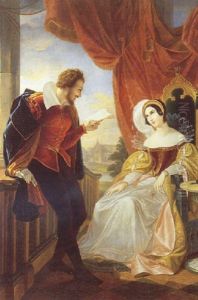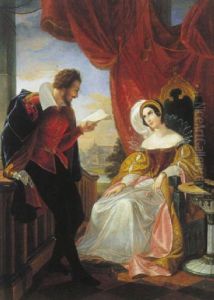Cesare Mussini Paintings
Cesare Mussini was an Italian painter, born on May 28, 1804, in Berlin, Germany. Despite his German birthplace, Mussini's artistic career and influence are firmly rooted in the Italian tradition, particularly within the academic and Neoclassical movements. His family moved to Italy when he was a child, which allowed him to immerse himself in the rich artistic culture of his ancestral homeland from a young age.
Mussini received his formal education in the arts at the Academy of Fine Arts in Florence, where he studied under the guidance of Pietro Benvenuti, a leading Neoclassical painter of the time. This training profoundly shaped his stylistic development, grounding his work in the principles of clarity, harmony, and historical rigor that characterized Neoclassical art. Mussini's talent and dedication to his craft soon earned him recognition, and he became a respected figure in the Italian art world.
Throughout his career, Mussini was deeply engaged with the intellectual and cultural currents of his time. He was known for his historical and biblical paintings, which were praised for their emotional depth and precision in detail. His works often reflected the Neoclassical ideal of beauty and morality, aiming to uplift and educate the viewer. Mussini also showed a keen interest in the human figure, and his portraits and genre scenes are noted for their psychological insight and character portrayal.
In addition to his work as an artist, Mussini was a prominent educator. He served as a professor at the Academy of Fine Arts in Siena, where he influenced a generation of young artists. His teaching emphasized the importance of drawing from life and studying the works of the great masters, both past and contemporary. Mussini's legacy as an educator is perhaps as significant as his contribution to Italian painting, as he played a key role in shaping the artistic direction of his students.
Cesare Mussini died on May 24, 1879, in Florence. His body of work and his influence on the Italian art scene of the 19th century have secured his place in the annals of art history. Today, his paintings can be found in prestigious collections and museums in Italy and around the world, where they continue to be admired for their beauty and historical value.
